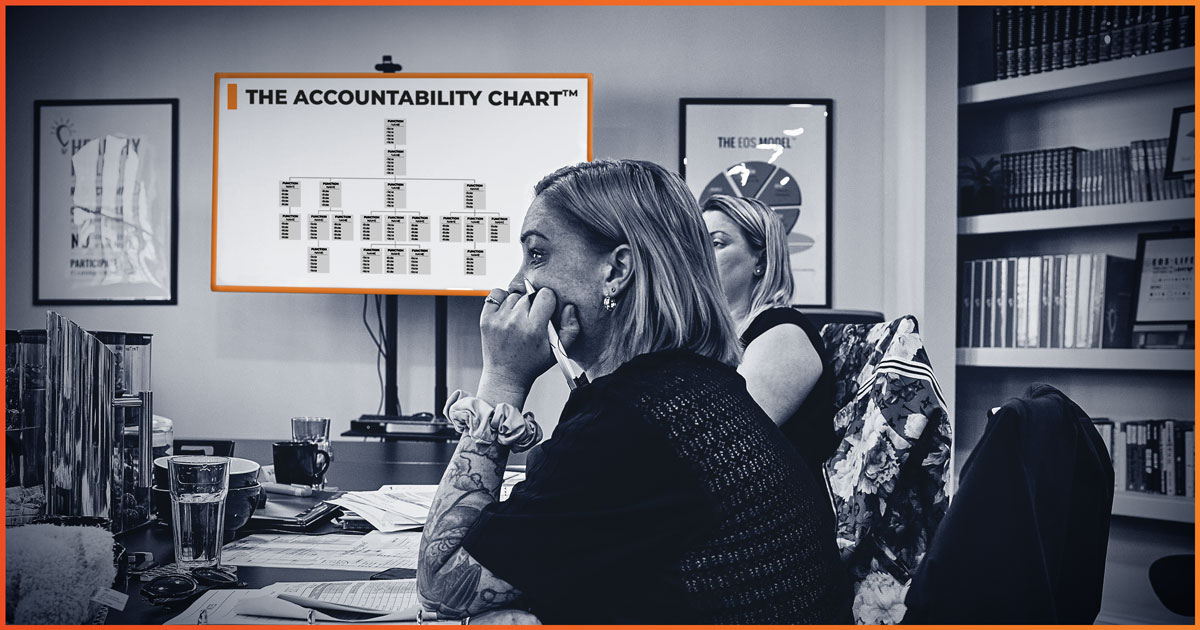
At a recent client session, one of the leadership team members, also a partner, apologized during the check-in. He admitted he hadn’t 100% prepared mentally for the meeting because of his struggles with anxiety. Unbeknownst to the team, he was considering leaving the firm and possibly his profession. He didn’t enjoy his role anymore and felt he was failing the team. His admission shocked the team as they considered themselves a close-knit group, especially the partners. Things had changed – in this case drastically – and their structure didn’t support the business anymore. We talked about how to save careers by revisiting The Accountability Chart.
Open and Honest Conversations
“Don’t ask yourself what the world needs; ask yourself what makes you come alive. And then go and do that. Because what the world needs is people who are alive.”
– Howard Thurman
This partner’s opening statements led to meaningful conversations, allowing others to express their frustrations and anxiety about their roles. They didn’t see themselves performing at their best as a leadership team. Instead, they’d reverted to the comfort of “hiding their heads in the sand.”
The Partner Trap
When beginning their journey to Running on EOS™, the team created their first Accountability Chart. It reflected the changes needed to pivot from a strong concentration in one industry to focus on growth areas.
As the company grew, the leaders fell into the trap of adding more members to the leadership team. This commonly occurs in professional service partnerships, but adding more members created unnecessary core functions.
The leaders slotted people into roles that they didn’t necessarily feel passionate about or where they didn’t add the most value. So they started struggling against their natural talents.
The original Accountability Chart served its purpose in that it helped develop growth areas in the firm. However, it no longer served them well and created anxiety amongst the leadership team. Thus, they agreed to get back to the basics and restructure the Accountability Chart.
Back to the Basics
We dedicated some important time in the session to restructuring The Accountability Chart so they could confidently answer these questions:
- Do we have the right structure that simplifies, clarifies, and creates accountability for the greater good of the company? Will this structure take us where we want to go?
- Do we have the right people in the right seats? Do they Get, Want, and have the Capacity (GWC™) to do their role well? Are they passionate about the role beyond just earning a check?
- Will this structure with these right people give us enough time to focus on what matters most? Can we focus on where we add the most value through our natural talents in our leadership team functions?
We simplified their Accountability Chart and reduced the number of leadership team members. It set the precedent that being a partner doesn’t entitle someone to a leadership team position.
We discussed how leaving the leadership team doesn’t make someone less valuable. Rather, the person’s value lies in a position that combines their passions and talents for the greater good of the company.
This new structure released some anxiety and excited the team about their roles. They refocused on the next three years of growth.
Accountability Chart as a Living Structure
So should you revisit your Accountability Chart too? Yes! The Accountability Chart should serve as a living tool. It helps the leadership team look ahead to create the right structure for the business for the future.
The structure that got you where you needed to go three years ago rarely gets you to the next three years. This is especially true if you grow or advance in different directions.
Have you created a structure to appease partners in your organization? Partners (and owners) don’t necessarily make great leaders who drive core functions in your company. By creating the right structure, you can answer the three questions above for your business. It will help get you to where you want to go while retaining talent and passion in your team.
To run a successful business, the EOS Model® teaches business leaders how to get strong in Six Key Components™: Vision, People, Data, Issues, Process, and Traction®. The Accountability Chart represents one aspect of the People Component™.
How strong is your company in the Six Key Components? Find out by taking the Organizational Checkup™ and get instant results.







